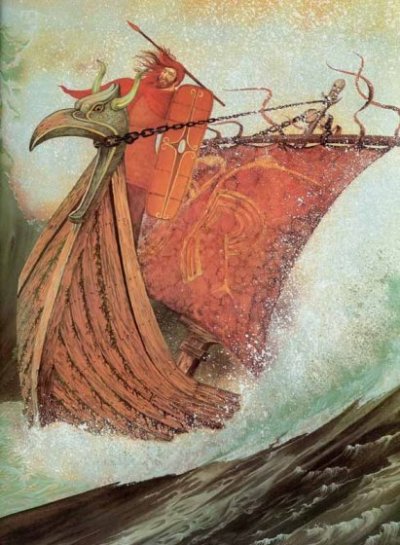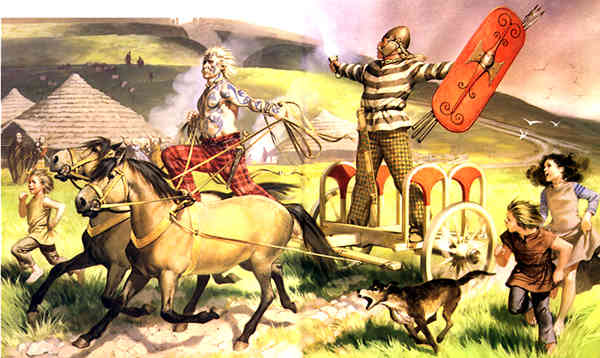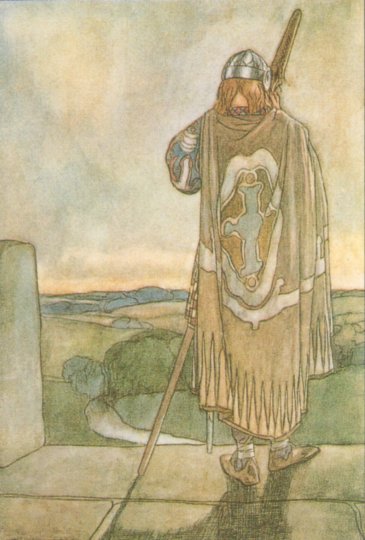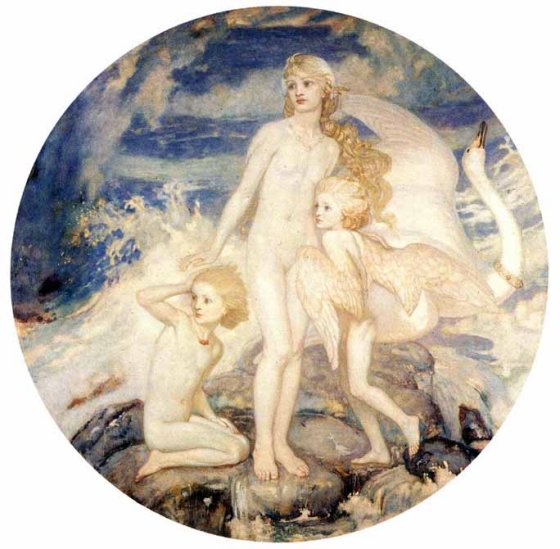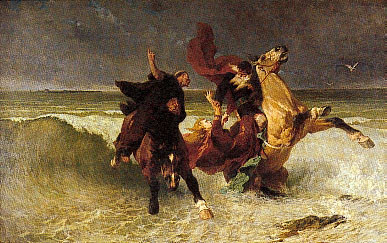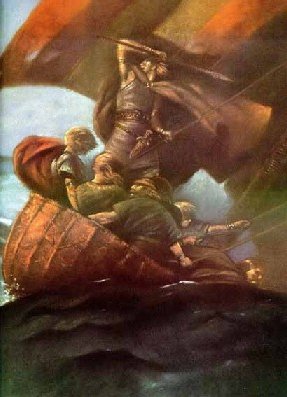Celtic Cycles
In Irish myths, the fictional history of Ireland can be divided into three periods. The Mythological Cycle or the Book of Invasions, comprised of successive settlements of early Celtic people in Ireland, particularly the Tuatha Dé Danann and the Milesians.
The other two cycles were supposed to be set at a later time. The Ulaid Cycle deals with the reigns of Conchobor of Ulaid and Medb of Connacht, particularly the warriors of the Red Branch and its greatest hero, Cú Chulainn. The Fenian Cycle (or the Ossianic Cycle) is supposed to be set in a more peaceful time of the reign of Cormac the Airt, particularly the warriors of Fianna and its greatest hero, Finn Mac Cumhaill.
Some scholars say that there was a fourth cycle called Cycle of Kings (or Book of Kings). This was supposed to be the history of early reigns of the Milesian kings.
The earlier Irish did not divide their myths and literature into cycles. These cycles were interpretations and usages of modern scholars. The uses of cycles in Irish literature were just a convenient means of dividing the Irish myths into periods. All of the romances and sagas of the three (or four) cycles were added into each of the main manuscripts, without any logical order.
The main sources for the Irish cycles can be found in three books: the Book of the Dun Cow (1100), the Book of Leinster (1160), and the Yellow Book of Lecan (14th century). They contain a collection of Irish sagas. All three books contain the Táin Bó Cuailnge (Cattle Raid of Cooley), the largest tale in Irish myths. The "Colloquy of the Ancients" (Agallamh na Seanórach), containing some of the stories of Finn and the Fianna, was written in 1200 but preserved in the Book of the Dean of Lismore by Sir James MacGregor, from the 16th century.
There were later Ossianic ballads containing more stories of Finn, both in Ireland and Scotland. In addition, Michael O'Clery wrote his own version of the Book of Invasions (1631). James Macpherson (18th century) was said to have discovered and translated the poem written by the bard-hero Oisin. It was, however, proven that it was just an invention of Macpherson.
In Welsh myths, the most important collection of works was from the Mabinogion. The Mabinogion was a collection of eleven tales (twelve if you include the tale of Taliesin), including some from the Arthurian legends. These stories, like those of the Irish sagas, were based on older oral traditions (except the three Welsh romances).
The first four tales, known as the "Four Branches of Mabinogi", were also sometimes known as the "Cycle of Peredur", though the hero Peredur only has a minor role in all four tales.
Note that the first three choices below contain a number of tales found in the Irish myths and literature, while the Mabinogion option contains a collection of tales found in Welsh myths. The new page called "The Fabulous Voyages" contains adventures of famous travellers found in the Irish and Welsh (including Arthurian) literature.
Please take the time to read the notes on this page.
Please select one of the choices below:
Other useful information includes:
Bibliography (Celtic sources)
Notes
The collection of Welsh stories can be found in the translation of the Mabinogion.
Also, some of the tales of King Arthur and his knights actually come from Welsh sources, particularly the "Culhwch and Olwen" story and the "Dream of Rhonabwy". However, the three Welsh romances in the Mabinogion were greatly influenced by Chretien de Troyes, who wrote his own Arthurian romances.
Speaking of King Arthur, since I was going to do a section on Arthurian legends, I've decided to leave out most of the stories associated with Arthur in the Celtic myths here (eg. three Welsh romances).
By Jimmy Joe
